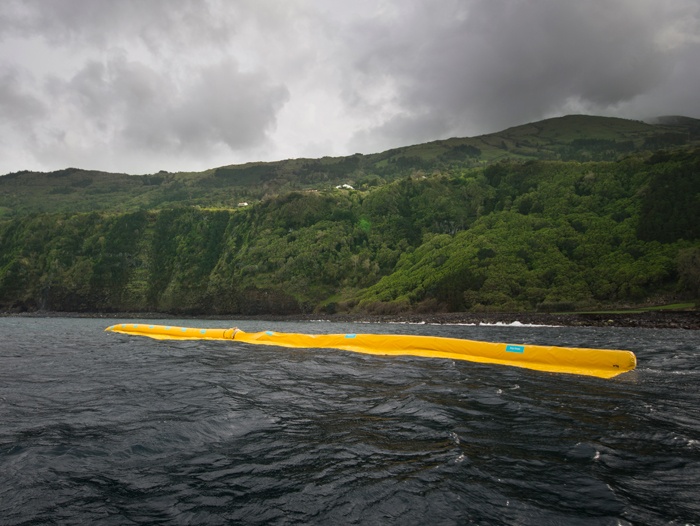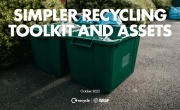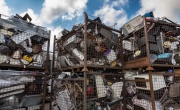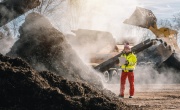‘Feasible’ garbage patch solution seeks funding
Following the release of a feasibility report in June that ‘its concept is a viable method to clean the oceans from plastic’, marine conservation group The Ocean Cleanup is now seeking crowdfunding of US$2 million (£1.2 million) to proceed to the next phase of testing.
 The Ocean Cleanup, founded by 19-year-old Dutchman Boyan Slat (pictured right), conducted a feasibility report into Slat’s concept for cleaning ocean gyres of plastic that involved ‘more than a year of extensive scientific research in engineering, oceanography, ecology, maritime law, finance and recycling’.
The Ocean Cleanup, founded by 19-year-old Dutchman Boyan Slat (pictured right), conducted a feasibility report into Slat’s concept for cleaning ocean gyres of plastic that involved ‘more than a year of extensive scientific research in engineering, oceanography, ecology, maritime law, finance and recycling’.
The feasibility study was financially supported by crowdfunding and professional in-kind contributions, involving an international team of ‘over 100 experts’, predominantly on a voluntary basis. Just over a week now remains for the foundation to raise crowdfunding for the next step, building and testing large-scale operational pilots.
Upon releasing the feasibility study, the foundation claimed that “the assumption that a cleanup of the infamous ‘Great Pacific Garbage Patch’ is impossible has been disproven”. Instead, the foundation says that within 10 years’ time, almost half of the plastic could be removed.
Origin of the idea
Speaking at the launch of the feasibility study, Slat explained the origin of his idea: “I first became aware of the plastic pollution problem when diving in Greece, coming across more plastic bags than fish. Unfortunately, the plastic does not go away by itself. Hence I wondered: why can’t we clean this up?”
Many experts, however, have deemed a cleanup impossible, saying it would cost billions of dollars and take thousands of years to complete, whilst also resulting in significant emissions and damage to wildlife. Slat continued: “I wondered: why move through the oceans, if the oceans can move through you? By attaching a system of long floating arms to the seabed, the oceans could basically clean themselves.” The 530-page report resulting from the feasibility work – reviewed by scientific peers – concludes it is a technically and financially viable method.
How it works

Slat’s concept uses ocean currents and winds to passively transport plastic towards a collection platform. Instead of using nets and vessels to remove the plastic from the water, solid floating barriers are used with the aim of making entanglement of sea life impossible. By deploying the proposed system for 10 years, almost half of the plastic within the Great Pacific Garbage Patch can be removed, according to the report.
Next steps
The Ocean Cleanup would now like to execute a series of up-scaling tests ultimately resulting in a large-scale operational pilot. To minimise costs, The Ocean Cleanup intends to act as a facilitator for the research, outsourcing most of the research to institutes and collaborating with offshore and engineering companies to cover most of the costs.
Based on this approach, The Ocean Cleanup now seeks US$2 million for the execution of this next phase. The crowdfunding campaign ends in eight days’ time and, at time of writing, 86 per cent of the total has been raised.
Speaking to Resource, Slat said: “Right now, we are a bit behind schedule by I think about $70,000 [£43,000]. So, we’ll be rather tense, but I certainly hope we can do it. Certainly everyone is invited to help and support through theoceancleanup.com.
“If we don’t make the target, we will still start the research and we’ll still really do our best to get this done, but the work would be a lot slower. And since it’s a rather urgent problem, we hope that we can rather urgently prepare the solution for execution.”
Seeking commercial recycling partners
Slat also told Resource that the foundation is “open to collaborations that are willing to look at further preparing the plastic feedstock from the ocean for commecialisation”. He said that, while a partner university in Brazil has conducted some tests that initially indicate the plastic could be recycled as well as used as pyrolysis oil, the foundation is “definitely open for collaboration” with other recycling companies. Interested parties can find contact details on the foundation’s website.
A more in-depth interview with Boyan Slat will appear in the next issue of Resource magazine.
Find out more about the Great Pacific Garbage Patch.






